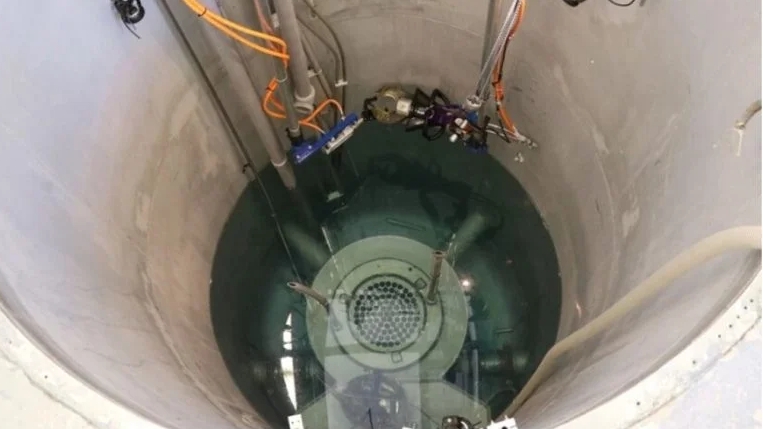
The VTT Technical Research Centre of Finland and Fortum have completed decommissioning of the FiR1 research reactor, Finland’s oldest nuclear reactor. FiR1, a water-cooled, pool-type TRIGA Mark II research reactor, with a thermal power of 250 kilowatts, was commissioned by the Helsinki University of Technology in 1962. It was used for versatile research purposes and also served the healthcare sector.
Operational responsibility for the reactor was transferred to VTT in 1971. Although licensed to operate until 2023, VTT decided in 2012 close FiR1 for financial reasons. In 2017, VTT submitted an application for permission from the Council of State to decommission the reactor. The total decommissioning costs amounted to approximately €24m ($25.7m), pre-funded by the Finnish Nuclear Waste Management Fund. In 2020, the used fuel was transferred to the US. A total of 103 used nuclear fuel rods, weighing approximately 300 kilograms, were removed from the reactor.
The decommissioning licence was issued in 2021 and Fortum, the main contractor, began dismantling in June 2023. The work was completed in April 2024. Fortum will continue with the final disposal of waste in the Loviisa NPP’s final repository for low and intermediate-level waste. A total of approximately 60 cubic meters of waste, mainly concrete, was generated for delivery to the Loviisa repository. A six-metre-high water tank and a two-metre-thick concrete shell surrounded the reactor.
“The process of decommissioning a nuclear reactor has now been comprehensively tested in Finland for the first time, taking into account the perspectives of various stakeholders,” said Markus Airila, VTT’s principal scientist, who led the project and served as the decommissioning manager. “Significant actions were taken during the process, such as establishing a national waste management mechanism. Administratively, the same measures were implemented as would be required for decommissioning a large reactor.”
He added: “The dismantling phase was very swift, thanks to thorough planning and preparatory work. Additionally, it was crucial that we could leverage the strong nuclear safety culture and expertise from Fortum’s Loviisa nuclear power plant. Fortum handled everything safely, efficiently, and on schedule without significant delays.”
“For us at Fortum, this successful project is a testament to our extensive expertise, covering the entire lifecycle of a nuclear facility. We have executed a nuclear facility decommissioning project with the same quality and competence with which we have operated nuclear facilities and delivered projects for external customers over decades,” said Antti Ketolainen, Fortum’s director in charge of the project.
Fortum’s responsibilities in the project covered the whole decommissioning work, which consisted of planning, preparatory measures, dismantling of the reactor and waste management, including the final disposal of decommissioning waste classified as radioactive.
A significant experience for both Fortum and VTT was the preparation of a decommissioning and dismantling plan required for the decommissioning license. Extensive documentation was produced and developed for this purpose. “We gained a lot of lessons and experience from the FiR1 project, which we can use to develop our operations and support our service business customers, for example, in preparing decommissioning plans and cost estimates,” Ketolainen continues.
Fortum said safety was an absolute priority during the planning and execution of the plant’s decommissioning, which was carried out under the oversight of the Radiation & Nuclear Safety Authority of Finland (STUK – Säteilyturvakeskus).
Alongside the FiR1 project, VTT, in collaboration with several Finnish partners, also executed the dECOmm development project funded by Business Finland. This project used the decommissioning project as a test platform for various applicable technologies and has successfully achieved its initial goal of exporting technology.